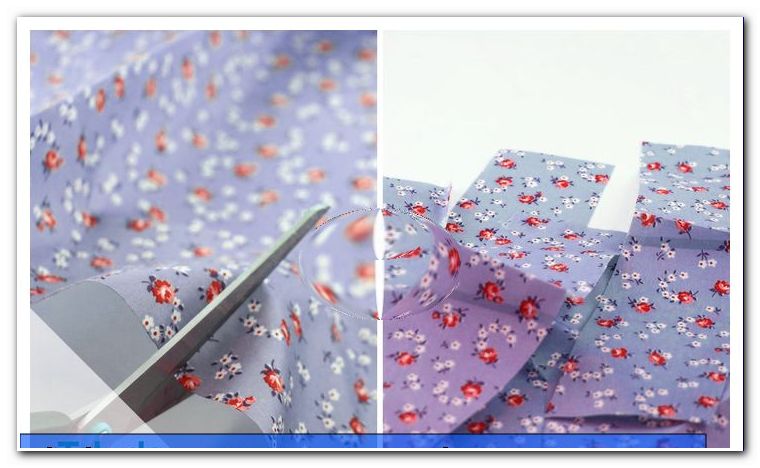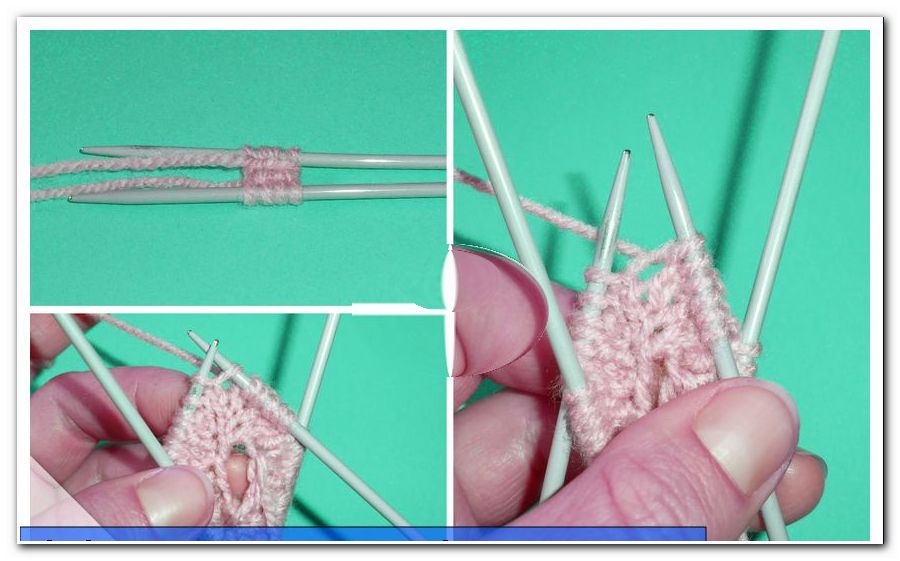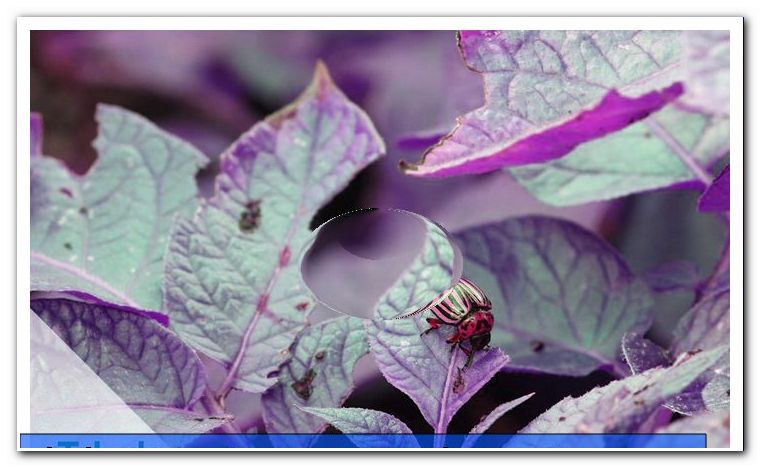Make Halawa yourself - instructions for hair removal

- Halawa make yourself
- Halawa: Instructions for hair removal
- 1. Flicking
- 2. Nonwoven strip method
- Buy Halawa
- Small Sugaring Halawa ABC
- Story: Halawi is pretty old
Halawa is gentle hair removal and ancient tradition - get to know the secrets of sugar paste for hair removal and their application, because more natural, thorough depilation does not.
Halawa is an ancient hair removal art that you can do yourself at home. As simple as the recipe and instructions for hair removal seem, it will take a little practice - but hair removal with Halawa is unbeatable, and the sugar paste is quite gentle on the skin:
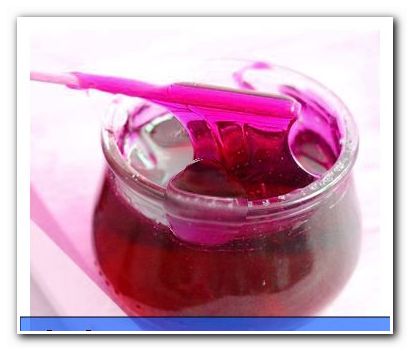 Halawa make yourself
Halawa make yourself
Halawa is an epilating hair remover (= gets the hair with the roots out of the skin) from sugar and lemon juice (and a little water).
The recipe is simple: Dissolve 200 g of sugar with 30 ml of lemon juice and 10 ml of water over medium heat in a coated pot. The lemon catalyzes the splitting of the sugar (sucrose = double sugar) into the individual sugars fructose and glucose.
The production of a soft, suitable for depilation mass is not quite so simple. When warm, the sugar mass is syrupy liquid, only after cooling, it is toughened. Experience has shown that you must simmer for about 10 minutes until the sugar mass is ready. But you need to tune this experience first to your recipe and your stove, it will take a while to cook the perfect Halawa right away.
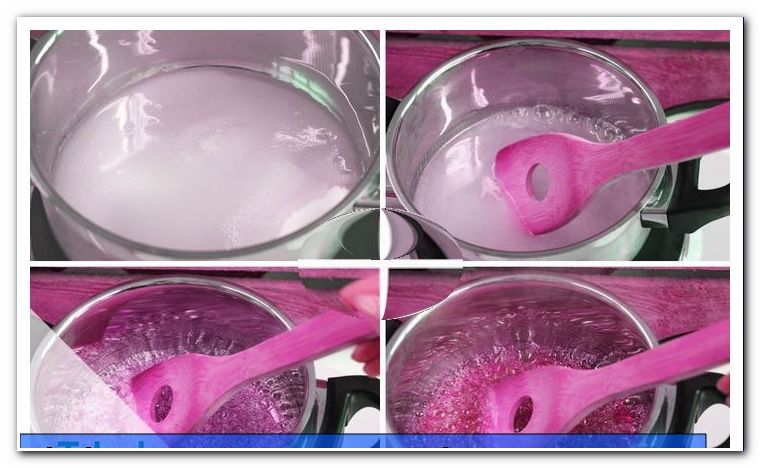
Halawa: Instructions for hair removal
Halawa is painted warm on the area to be depilated. It is either pulled off directly with hair or on the Halawa comes before stripping a strip of fabric. You have to try out which method suits you better, here both at a glance:
1. Flicking
Flicking as a hand technique method is the typical and traditional application.
First of all, flicking is literally hand-crafted, and when it's cold Halawa has to be made so supple by kneading that it spreads well and allows the hair to be incorporated.
If you have stored the Halawa at temperatures below 20 ° C, it must first be heated in a warm water bath to about 30 ° C. If the Halawa has stood in the warm apartment, you can start immediately with the kneading. The colder the heavier the mass can be kneaded at first.

First, a piece is separated from the container, with a large spoon, spatula or knife. Then "grasping" is quite literally meant, you take turns kneading into the mass and pull them apart until the crystal-clear honey-yellow color has become an opaque "dough" in light or dark yellow color.
In the application then the "technique" of "hand technique" plays a role: Brush your kneaded piece against the direction of hair growth (legs = from bottom to top), and strike one more time, twice in this direction with pressure over it, so that the paste really lays around every hair.

The second, third, fourth time (when exactly, is feeling thing) use "to attack the hair", when you have reached the top: From the stroking hand movement, pull the paste with a jerk down - in hair growth direction, so The hair is easier to remove from the skin.
After you know theoretically what is important, you should take a look at the whole thing even more times, eg. Eg here:
So often, until you have "internalized" the way of working a little bit and do not have to think twice about doing it yourself.
Eventually, the mass softens and can not be pulled off well, then it's time to knead the next piece. If the paste tears in the middle, leave half of it on the skin until it cools down and continue to work elsewhere (with a new paste if necessary). If the color has changed (= cooled), you can use the paste just used to stroke over the stain and remove it. Similarly, all other small remnants that leave the paste on the skin are removed: press ball of sugar paste and pick off jerkily.
2. Nonwoven strip method
The non-woven strip method works like waxing: Apply soft paste against the hair growth direction with wooden spatula on the skin, apply strips of non-woven fabric, rub against the direction of hair growth and pull off flat with hair growth direction quickly and jerkily.
The fleece is available for purchase, experienced users also like to process their old T-shirts, which they cut into strips.

The non-woven stripe method also works with non-kneaded, body-warm Halawa, and even Halawa should be processed / used, which has remained too liquid during cooking.
Buy Halawa
Professionals advise beginners to work with purchased sugar paste first so they get a feel for the material / consistency. The sugar paste can be obtained from various sources:
- Waxingshop by Tara Cosmetics, www.tara-cosmetics.de, 1 kg sugar paste for 18, 95 €
- eBay, 1 kg sugar paste for an average of 20, - €
- Porta cosmetics, www.porta-kosmetik.de, 850 g sugar paste 19, 95 € (1 kg = 23, 47)
- Orient-feinkost.de, www.orient-feinkost.de, original Turkish Camsakizi Agda sugar paste, 1 kg at 8, 50 €
With these offers, shipping may be added, Camsakizi Agda sugar paste can be found free of charge in the next Turkish supermarket.
Small Sugaring Halawa ABC
It's hard to start with, there are some situations where additional questions may arise or you may come into conflict with the unfamiliar sugar paste. The following bullet points explain Sugaring / Halawa from A to Z:
armpits
Can be well depilated with Halawa, the pain should be about peel off with patches.
storage
Sugar paste is best kept in a cool place (not in the fridge, better in the cool side room, in the pantry, on the balcony). For example, in preserving jars, when the storage vessel is tight, Halawa should be stable for up to one year.
cooling down
is urgently necessary, if you take the sugar mass from the stove, it has nearly 120 ° C. Cooling can last forever in summer heat (up to 7 hours) and can be accelerated by a parking space in the coolest room (or in a large bowl of ice water).
Organic lemon
For people with sensitive or fast allergic skin and asthmatics (cooking fumes) can bring advantages over the "small yellow bottle" - which contains citric acid and potassium metabisulfite, both can irritate the eyes and the respiratory tract and when applying the skin.
train
You must Halawa while flicking, in the direction of growth and with pressure, 2 - 3 times in a row. How carefully or vigorously you proceed here, decides how much hair the mass takes with the removal.
Heat
becomes necessary before processing if the sugar paste is stored below 20 ° C. Approximately 15 seconds in the microwave usually bring the desired suppleness.
colour
varies with the colorant of the lemons, white or brown sugar and the length of the cooking process between light acacia honey to dark forest honey:
It does not work
despite proper consistency and proper use "> History: Halawi is already quite old
This gentle depilation method comes from the Orient, perhaps directly from the Seraglio. It is certainly certain that since the invention of the hammams (Turkish baths, oriental baths) the hair removal with the sugar paste belonged to the usual care in these public baths.
So for a very long time, the public baths or steam baths from the Arab world, the Iranian cultural area and Turkey are ancient inventions. In these places of beauty care it was not all about bathing, cleansing and sweating - the men shave here, the women enjoy exfoliating massages and a body depilation, which includes at least the armpits and pubic hair, and can possibly color the hair, of specially employed personnel.
Even today, there are hammams (or even, in the west), but access is no longer free or affordable for every citizen. And the staff is thinning, personal care services are no longer automatically included. That is why more and more is being depilated at home, sometimes in real small beauty care parties where the unused remains of the sugar paste are also processed immediately:


 Halawa make yourself
Halawa make yourself 